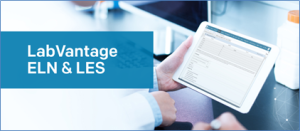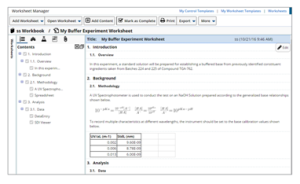 Laboratory Information Management Systems (LIMS) are now found in labs everywhere, from the pharmaceutical to food and beverage, to the oil and gas industries.
Laboratory Information Management Systems (LIMS) are now found in labs everywhere, from the pharmaceutical to food and beverage, to the oil and gas industries.
At its core, a LIMS system manages the workflow of samples during testing – along with the approval and reporting of results. But as the product has matured, LIMS have expanded to handle other processes related to testing, including reagent inventories, sample storage, and requests.
Although LIMS software manages the sampling, requests, tests, results and reporting activities in the lab, it was not designed to document information typically recorded in paper-based lab notebooks. As labs have moved from paper to electronic systems to document and manage their daily workflow, electronic lab notebooks (ELN) have emerged to become the primary tool for this task.
Benefits of ELNs
Using an ELN may not make you invisible to Orcs, but it can transform how research is performed. An ELN eliminates unnecessary paper records, allowing users to capture, organize, collaborate and manage experiments and test execution workflows across an organization. It’s a key tool for anyone who creates, reviews or manages research.
An ELN fosters smart collaboration – not just by uniting scientists regardless of their location, but also by indexing their data. Specific searches can be carried out for compound names, chemical lot numbers, scientist names or experiment dates, location, project name, or study phase, among other possibilities.
Scientists can send information through experiment “hyperlinks” and make “sticky note” comments. Related experiments can be connected via a two-way link, reducing errors. Existing experiments can be electronically cloned to begin new experiments.

The Best of Both Worlds: Unified Architecture
While ELNs were designed to record the work done in the lab to create samples and conduct testing, using multiple systems to record information can cause an inherent disconnect for users. Despite users’ efforts, the disparate architecture and data models of the ELN and LIMS can limit data integration and correlation.
One solution?
ELN capabilities built in to a LIMS. Rather than an integration of two separate systems, this has become a unified architecture that combines the capabilities of an ELN and LIMS in one software package with one data model.
This was how we approached the design of LabVantage’s ELN – by fully embedding it into LabVantage to provide a comprehensive and integrated lab automation solution. Integration ensures a consistent look and feel – delivering a seamless environment & interface to users, and eliminating the need to manage multiple vendor solutions or expensive & complex LIMS interfaces.
Among other features LabVantage integrated into the ELN:
· Users can leverage features of the LIMS from within notebook pages.
· The ELN utilizes LabVantage LIMS comprehensive instrument data capture features.
· A highly responsive, web browser-based user interface, requiring no client-side installation, validation or maintenance.
· Fully HTML 5 compliant, to ensure broad browser-based support (Internet Explorer, Edge, Chrome, Safari) – including tablets.
With this fully-integrated system, users can create experiments and document their work in a fully functional ELN. They can record textual information, attach files and program calculations to meet their individual needs. When creating samples, scientists and laboratory professionals can document their work in the ELN and then seamlessly submit the sample to the LIMS for testing and management. The software provides a full link between all the information. Analysts can also use the ELN to document the steps taken to prepare and test the submitted samples.
Thanks to the versatility of its ELN and LIMS capabilities, the LabVantage software is a comprehensive solution that meets the research lab’s need to record, retrieve and reuse its data. Simply put, it turns data into usable information.
To find out more about how combining an ELN and LIMS in one software package can improve your daily workflow, contact LabVantage for a demonstration.



